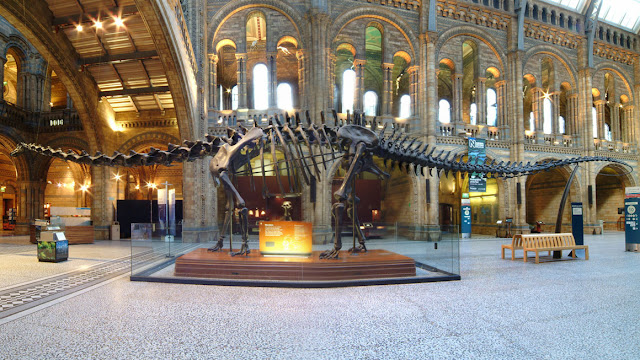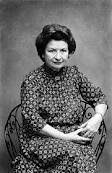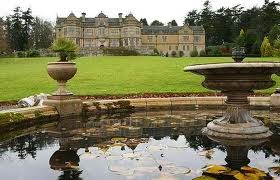The birds and the....dinosaurs
A few months ago I read Steve Brusatte's fascinating book The rise and fall of the dinosaurs. For days following the conclusion of the book I irritated every bird I met by squawking "Dinosaur" accusingly whenever I saw one. I even managed to shut up "Atticus", the finch who nests outside my bedroom window, and who is generally unquashable (we often come nose to beak in the early mornings as he's clearly a morning "person", and I'm.....not).
There was so much I loved about Brusatte's book. It was scientific, but easily understandable by those who are interested in the subject, but don't know a great deal about it (me!). Most of all, I loved that it told the story of the dinosaurs from a rather different angle. Here you could read not only about the creatures themselves, their evolution and their (apparent) extinction, but also about the then landscape of the earth, the continents that these amazing creatures found themselves living on, the plants they ate, the lives they lived, the brains they had, in such an eerily unfamiliar world to ours.
Dinosaurs like mammals started small. The mass extinction at the end of the Permian period provided a gap that needed filling (around 96% of life on earth perished), and dinosaurs developed to fit into that gap. They would reign supreme for around 100 million years, diversifying in size, shape and diet, producing some of the largest, and possibly brainiest animals to grace the earth. They covered a wide range of habitats, and were hugely successful, and certainly not the dim, plodding creatures doomed to extinction that I had as a child believed them to be.
Recent scientific research has found out all kinds of interesting things about dinosaurs. It's been known for some time that they are related to birds. In fact it would be fair to say that dinosaurs are NOT extinct, although the land based dinosaurs did indeed perish shortly after an asteroid (or similar) hit the earth, their relatives, the birds, did survive, and are now one of the most successful creatures to currently inhabit the earth, with homes on every continent, and some of the cleverest brains on the planet. A worthy successor to their T-Rex cousins.
How do we know birds are so closely related? And what does this tell us about dinosaurs? The first clue was in the bone structure with dinosaur feet being closely related to those of birds. More recently it's become clear that dinosaurs had feathers. Interestingly it's now believed that feathers were not initially evolved for flight, it's most likely that their evolution came about in the same way that mammals developed fur - for warmth. As the feathers grew longer (perhaps as part of a mating display?), smaller dinosaurs, perhaps climbing trees to stay out of the way of hunters, found themselves able to glide, and gradually flight developed.
Another fascinating piece of biology shared by birds and dinosaurs is their clever lungs. Birds don't just get one shot of oxygen as they breathe in, they also get another shot as they breathe out. This leads to a pattern forming on the anatomy near the lungs, which can be seen in dinosaur fossils. These likenesses have also led scientists to think about the general anatomy of dinosaurs - birds' legs are sturdy (just think about the forces on them for landing and taking off), but the upper part of their anatomy is much lighter, helping them to stay airborne, and also to move more briskly on the ground. It's likely that dinosaurs were structured in a similar way, so less the lumbering giants that many believed them to be in the past.
The close relationship between dinosaurs and birds didn't altogether surprise me. Many years ago I had a much loved green and yellow budgerigar, Lucky, who once beat up the family cat, who was no mean hunter of avian life. The roar from his little beak as he proceeded to attack the cat evoked the spirit of his mighty cousins.
Jennifer Ackerman's The genius of birds enabled me to look at both dinosaurs and birds from a rather different perspective. Ackerman is a keen birder (as bird-watchers are delightfully known in the USA, where bird-watcher appears to be a derogatory term, unlike in the UK), and her book looks at the development of birds, and, most importantly their brains. Bird-brained has long been a term of abuse - akin to scatter-brained, with no ability to concentrate, and little intelligence. Ackerman reveals that if this is the definition of bird-brained, real birds are most definitely not bird-brained. There are some amazing stories here, not least the way birds learn from each other - when one blue-tit in London discovered how to open a milk bottle, its friends soon followed, and the habit quickly spread across the country, American birds have been observed caching food stores across a wide area, and they virtually always remember where the food has been left, while mockingbirds learn to sing and store a huge fund of tunes within their tiny brains. From phenomenal navigational feats to tool-making, formerly believed to be solely the province of the great apes, birds have awesome abilities. In fact some birds brain power is on a par with tool-making apes or a 3 year old child!
Lyanda Lynn Haupt's perspective was different again. Her charming book Mozart's starling looked at a small episode in Mozart's life - his time spent with a pet starling, and Haupt's own upbringing of a starling chick, Carmen. Much to my surprise, in the USA starlings (an import from the UK) are considered a pest, whereas over here, their increasing rarity is making them something of a delight, I especially enjoy their aerial manoeuvrings when they're "murmurating" over the Fens.
There was so much I loved about Brusatte's book. It was scientific, but easily understandable by those who are interested in the subject, but don't know a great deal about it (me!). Most of all, I loved that it told the story of the dinosaurs from a rather different angle. Here you could read not only about the creatures themselves, their evolution and their (apparent) extinction, but also about the then landscape of the earth, the continents that these amazing creatures found themselves living on, the plants they ate, the lives they lived, the brains they had, in such an eerily unfamiliar world to ours.
Dinosaurs like mammals started small. The mass extinction at the end of the Permian period provided a gap that needed filling (around 96% of life on earth perished), and dinosaurs developed to fit into that gap. They would reign supreme for around 100 million years, diversifying in size, shape and diet, producing some of the largest, and possibly brainiest animals to grace the earth. They covered a wide range of habitats, and were hugely successful, and certainly not the dim, plodding creatures doomed to extinction that I had as a child believed them to be.
 |
| "Dippy", the Natural History Museum's much-loved diplodocus cast. He's now touring the UK. |
How do we know birds are so closely related? And what does this tell us about dinosaurs? The first clue was in the bone structure with dinosaur feet being closely related to those of birds. More recently it's become clear that dinosaurs had feathers. Interestingly it's now believed that feathers were not initially evolved for flight, it's most likely that their evolution came about in the same way that mammals developed fur - for warmth. As the feathers grew longer (perhaps as part of a mating display?), smaller dinosaurs, perhaps climbing trees to stay out of the way of hunters, found themselves able to glide, and gradually flight developed.
Another fascinating piece of biology shared by birds and dinosaurs is their clever lungs. Birds don't just get one shot of oxygen as they breathe in, they also get another shot as they breathe out. This leads to a pattern forming on the anatomy near the lungs, which can be seen in dinosaur fossils. These likenesses have also led scientists to think about the general anatomy of dinosaurs - birds' legs are sturdy (just think about the forces on them for landing and taking off), but the upper part of their anatomy is much lighter, helping them to stay airborne, and also to move more briskly on the ground. It's likely that dinosaurs were structured in a similar way, so less the lumbering giants that many believed them to be in the past.
The close relationship between dinosaurs and birds didn't altogether surprise me. Many years ago I had a much loved green and yellow budgerigar, Lucky, who once beat up the family cat, who was no mean hunter of avian life. The roar from his little beak as he proceeded to attack the cat evoked the spirit of his mighty cousins.
 |
| Watch out, Sylvester - that's a dinosaur in there. |
 |
| Lyanda Lynn Haupt's book, alongside Carmen, her very own pet starling. |
 |
| A murmuration of starlings in Fenland Norfolk. Photographed by Jackie Dent. |
In contrast to America, starlings in the UK are on the Red list of endangered birds, and are a protected species. I thoroughly enjoyed Haupt's book about the joys of living with a smart bird, and its connections with music, though I remain unconvinced about its providing inspiration to Mozart (though I am sure that he delighted in his time spent with his feathered friend, birds can be great companions). This is a delightful book however, a mixture of music, bird lore, and a happy life.
Another delightful book, though less serious was the pseudo-historical tale A dodo at Oxford, which kept me happily entertained and wishing, very much, that dodos were not extinct - I would love a pet dodo, though I would suspect that they, besides being wonderfully innocent, truly were bird-brained. Thankfully the dodo of this tale fared rather better than the one that ended up in the Ashmolean museum, it apparently was shot; the author was evidently quite right not to trust Elias Ashmole! A beautifully created volume aping a C17th volume, this was a joy both to read and to handle.
And that's it on birds and dinosaurs. For more information on dinosaurs and some superb illustrations have a look at New Dinosaurs. For more on the bird / dinosaur link there are some helpful pages at the American Museum of Natural History's website.









Comments